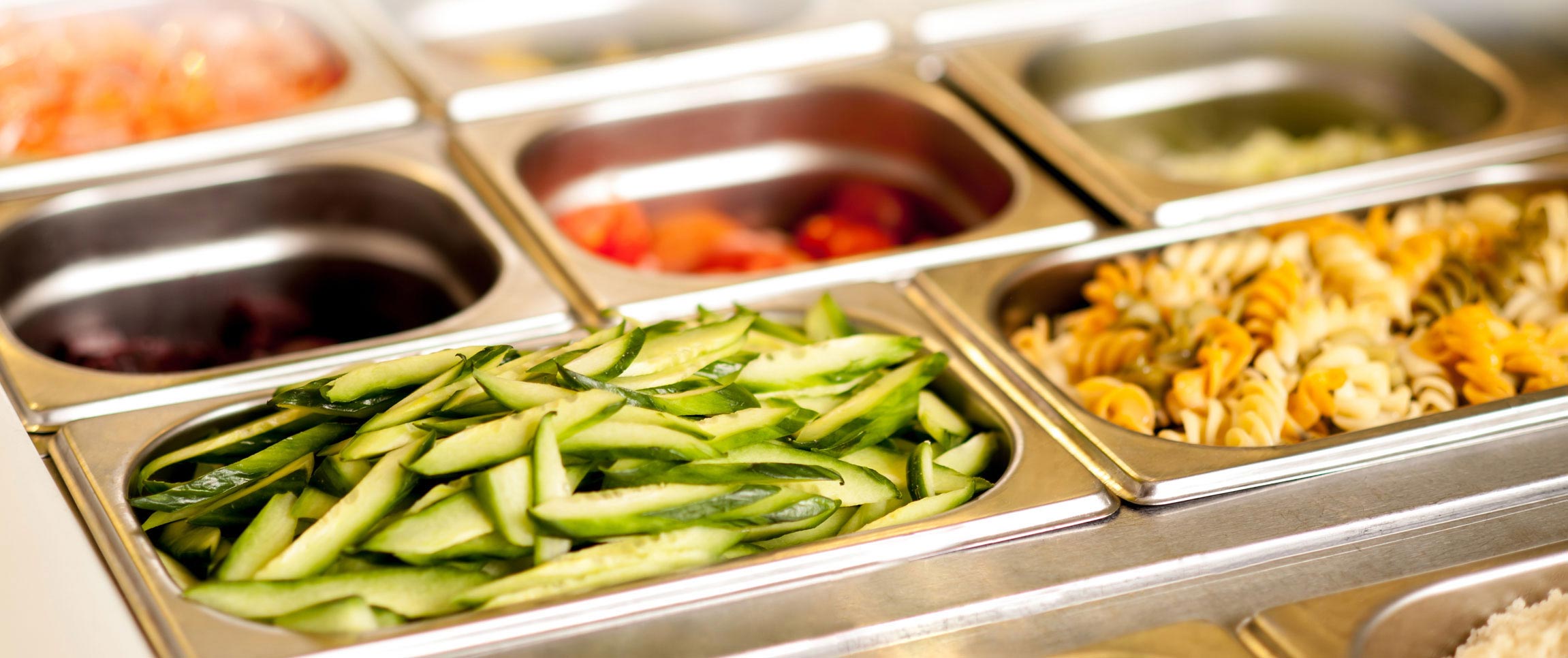Every box of panko bread crumbs, every bag of dried chickpeas, every can of San Marzano tomatoes sitting in storage is quite literally cash on the shelf. When you scan your dry storage, you should see little dollar signs on every item.
That’s because you’ve already invested in them and they represent the opportunity to make money. For that reason, proper inventory management is one of the most essential elements of maintaining a profitable food business. But what separates useful inventory management from sloppy practices riddled with human error? We identified five ways to make the most of your inventory process, so your ingredients can make the most money for your business.
Get Organized
It’s impossible to record an accurate inventory count in a space that’s cluttered and unorganized. Take time when the restaurant is closed to put everything in its proper place before attempting to take inventory.
Invest in sturdy shelves and bins. It’s just like cooking—you need the right tool for the job. If your storage shelves are rusted, breaking, or incapable of holding the amount you need them to, it’s time to get new ones.d to put everything in its proper place before attempting to take inventory
- Create sections based on the type of food—grains, legumes, canned goods, spices. Then, create a map of where each section is located. Keep this file on the computer, and change it as necessary. Print out copies for staff, and post a copy in the storage area.
- Create a spreadsheet with columns for the following: Items, Unit of Measure, Inventory Amount, Unit Price, and Total Cost. List the items according to where they are found on the storage map. This will reduce the time it takes to perform inventory checks.
- Use a clear and consistent labeling system for everything in storage. Printed labels are easier to read and more likely to be accurate than handwritten labels. Consider laminating labels for easy cleaning.
- Minimize frozen storage. When you think about it, what exactly do you need to keep in frozen storage? Probably a lot less than what you’ve got kicking around in the freezer currently. Do a freezer audit and get rid of everything that is not essential for service in the near future. The freezer is where stuff goes to die, and in the meantime, it keeps staff from getting a clear view of what’s available. Keep the freezer light and lean.
Train All Staff
Taking inventory works best as a two-person system where each person takes inventory separately and then compares results with a partner. Identify who the two people are who will be responsible for monthly inventory and have a special training session with these two people. This training should include learning terms like yield, variance, and depletion.
 Once these two employees are thoroughly and properly trained, have them hold a training session for everyone else on staff to learn exactly what goes into taking inventory and why it’s important. Give them ownership over this training session, but make sure they address the following:
Once these two employees are thoroughly and properly trained, have them hold a training session for everyone else on staff to learn exactly what goes into taking inventory and why it’s important. Give them ownership over this training session, but make sure they address the following:
- The importance of First In, First Out (aka FIFO).
- The organization of storage spaces. Physically walk through the map with staff.
- Protocol when staff identifies breakage, spoilage, or other waste issues.
- Yield and cost analysis—have your inventory managers lead the entire staff in a yield exercise of a particular ingredient. This gives staff an idea of where waste comes from and how to avoid it. Use that ingredient to cost out a recipe on your menu from start to finish to give staff an appreciation of the realities of food cost. Discuss the role of staff in reducing food waste.
Stay Consistent
Inventory is all about consistency. You will minimize error by using the same staff and same routine at roughly the same time of day and day of the month. Make sure it’s a time when the restaurant is closed and orders aren’t coming in. Standardize units of measurement, whether you’re using ounces, pounds, units, etc.
Also, back up monthly inventory with nightly and weekly inventory checks, as a way of keeping an ongoing record of what’s in stock and what needs to be ordered.
Use Technology
There are a ton of resources for inventory management, including inventory tracking sheets and POS systems that synchronize with inventory lists. Research whether your current POS system can perform any functions related to inventory management, and compare with other services online. Some popular inventory management tools include:- Restaurant Maid
- Restaurant Recipe Costing, Inventory, and Menu Profitability Spreadsheet Workbook for Excel
- CostGuard
- Upserve Inventory
Record and Analyze Waste
Some food waste is inevitable. Inventory checks can help you identify where the greatest waste comes from, whether its mishandling ingredients, spoilage due to not adhering to FIFO or not using products quickly enough, or theft. At the end of each month’s inventory review, determine where waste has come from that month and what needs to be done to address it. Is it necessary to revisit training, install checkpoints or better monitor the store room? If so, adapt to solve the problems as you identify them.
Don’t get stuck in a rut because that’s when proper inventory management, and the money it represents, starts to fall through the cracks.



